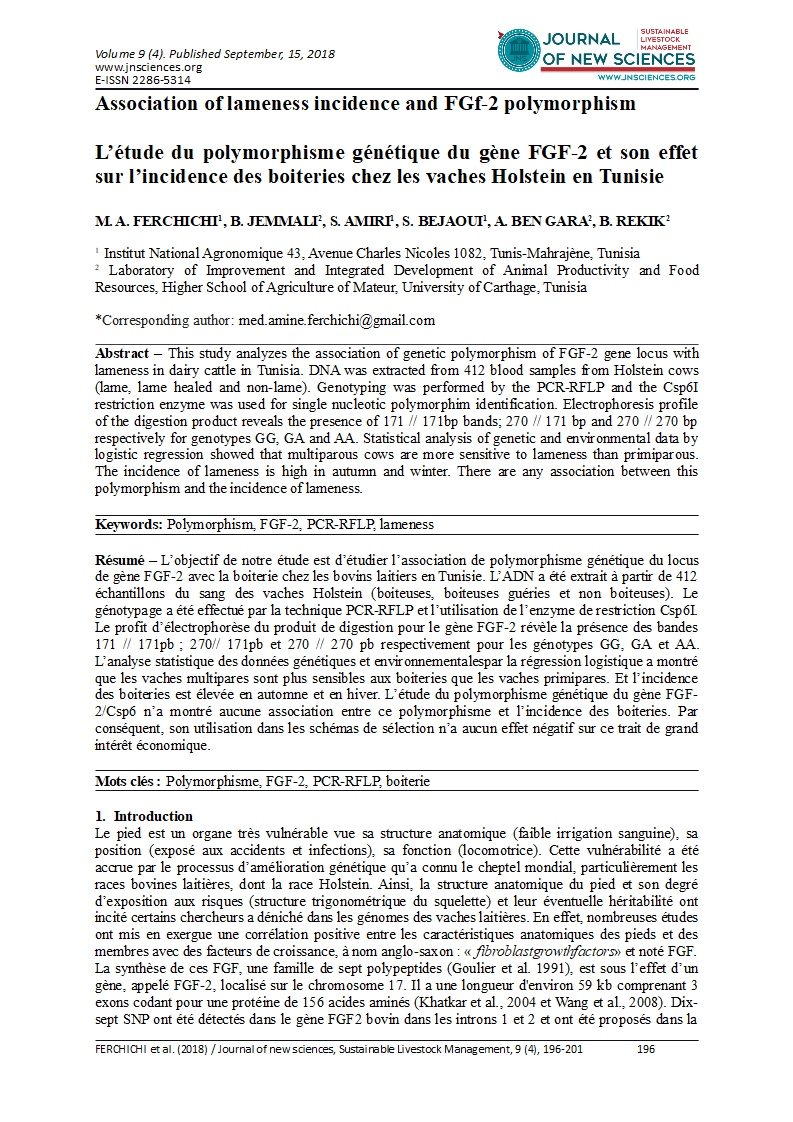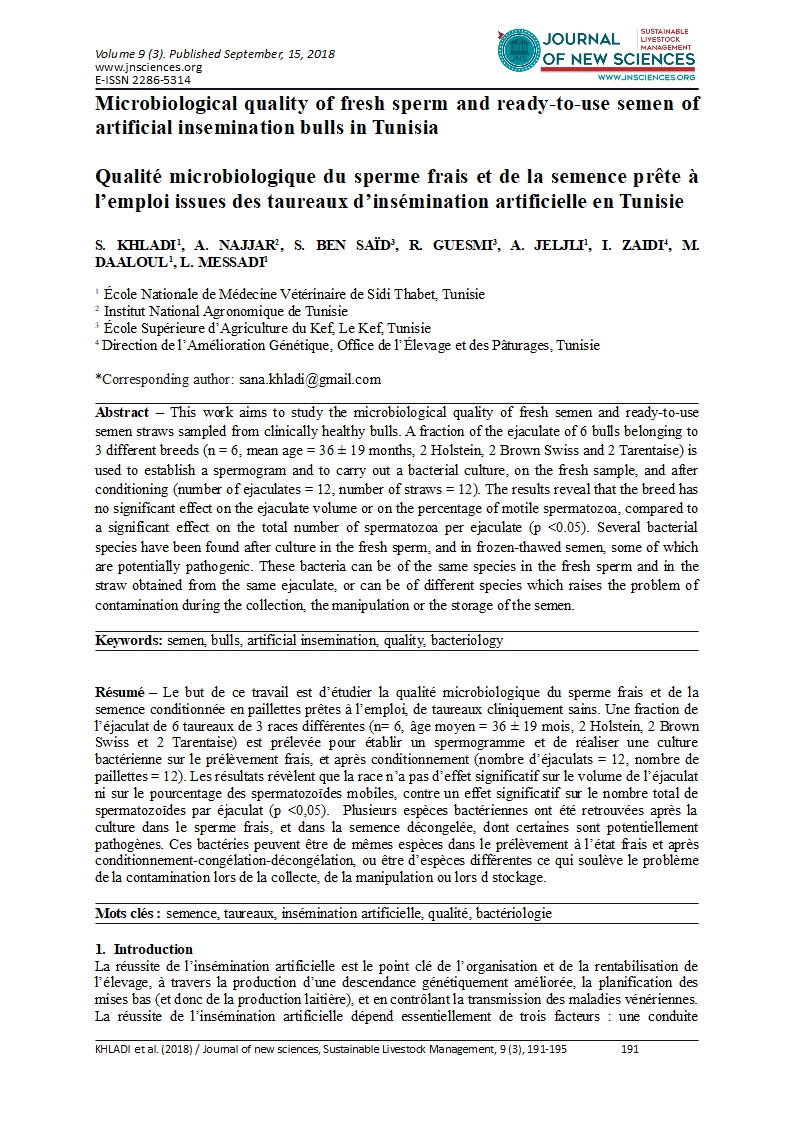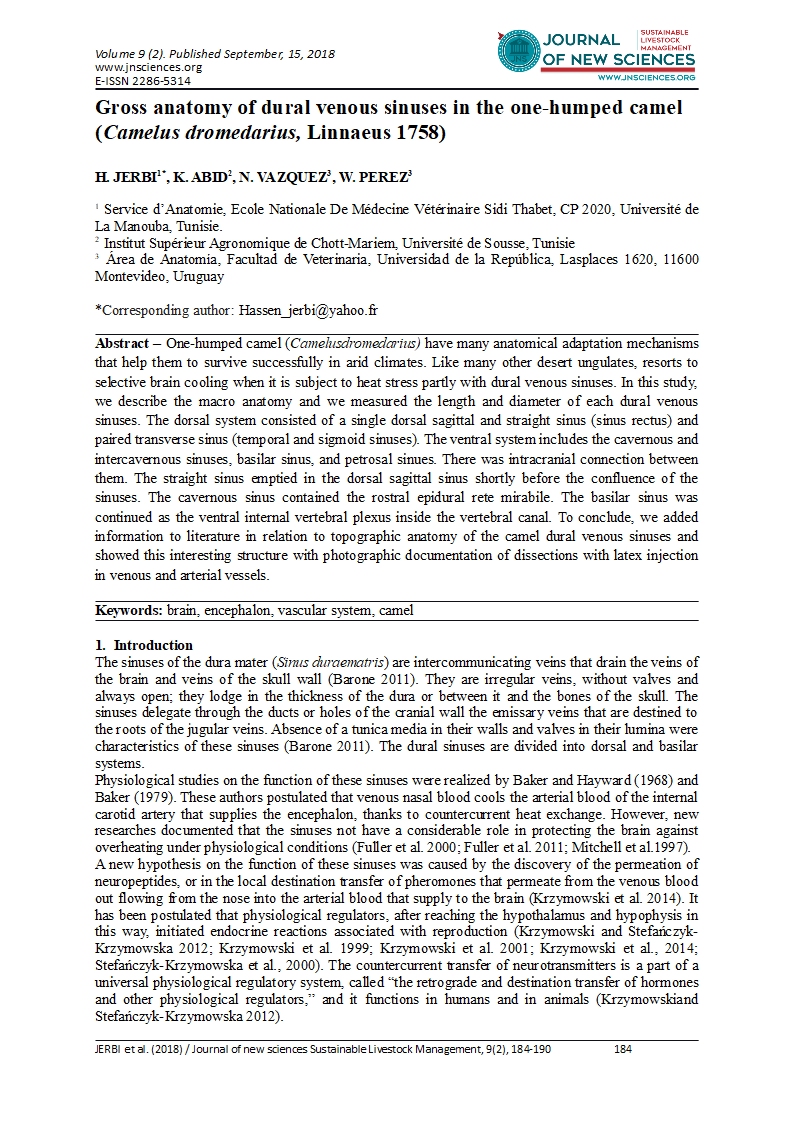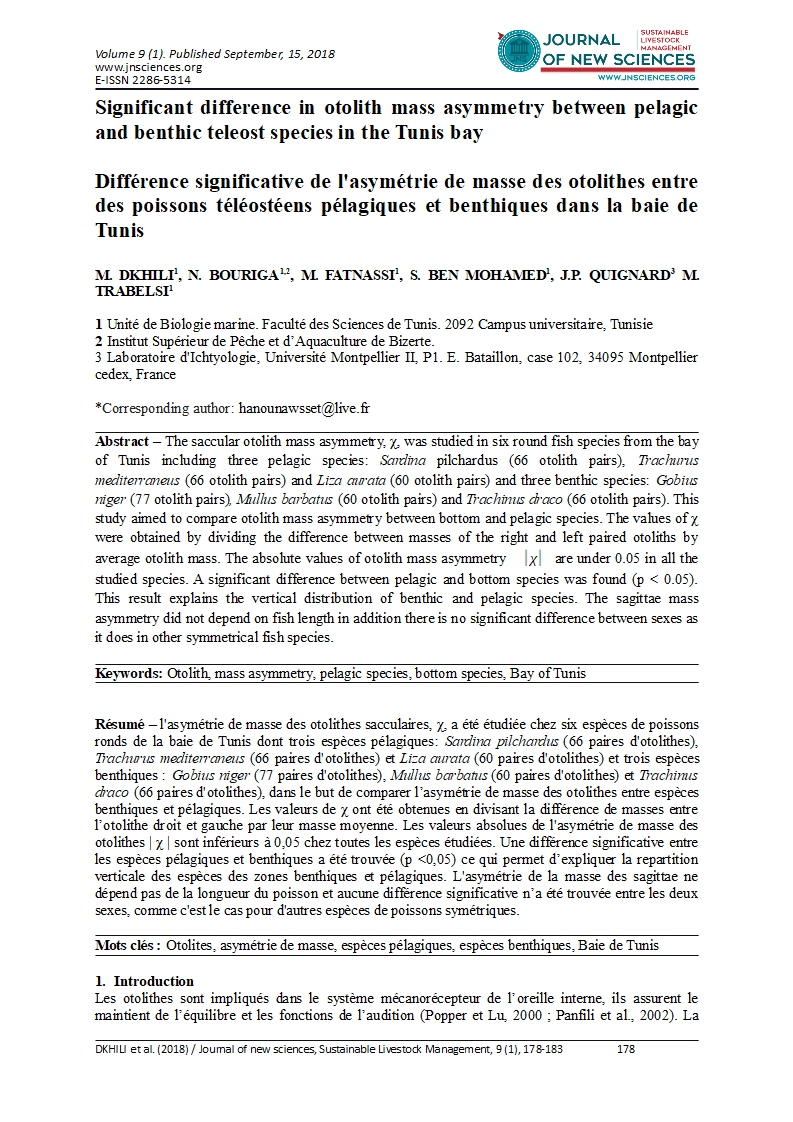- Category: Volume 9
- Hits: 14652
Milk composition Comparison between donkey, goat and cow breeds
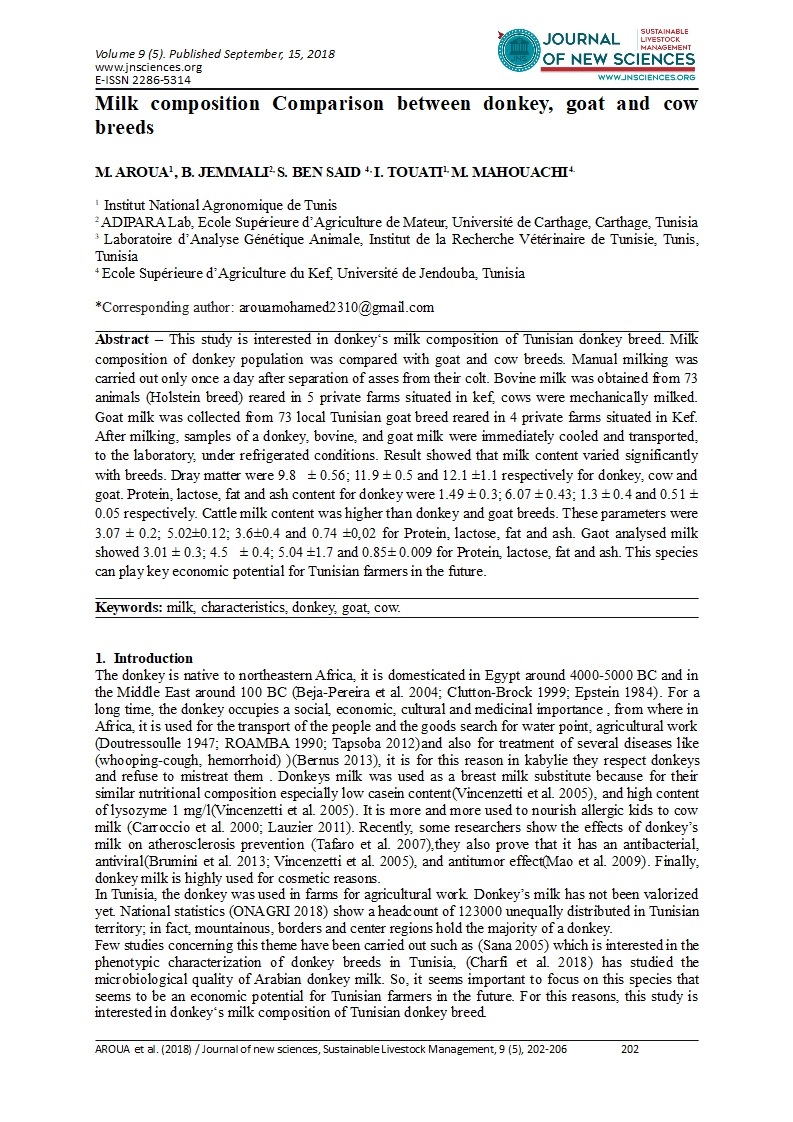
M. AROUA1
B. JEMMALI2
S. BEN SAID 4
I. TOUATI1
M. MAHOUACHI4
1 Institut National Agronomique de Tunis
2 ADIPARA Lab, Ecole Supérieure d’Agriculture de Mateur, Université de Carthage, Carthage, Tunisia
3 Laboratoire d’Analyse Génétique Animale, Institut de la Recherche Vétérinaire de Tunisie, Tunis, Tunisia
4 Ecole Supérieure d’Agriculture du Kef, Université de Jendouba, Tunisia
Abstract – This study is interested in donkey‘s milk composition of Tunisian donkey breed. Milk composition of donkey population was compared with goat and cow breeds. Manual milking was carried out only once a day after separation of asses from their colt. Bovine milk was obtained from 73 animals (Holstein breed) reared in 5 private farms situated in kef, cows were mechanically milked. Goat milk was collected from 73 local Tunisian goat breed reared in 4 private farms situated in Kef. After milking, samples of a donkey, bovine, and goat milk were immediately cooled and transported, to the laboratory, under refrigerated conditions. Result showed that milk content varied significantly with breeds. Dray matter were 9.8 ± 0.56; 11.9 ± 0.5 and 12.1 ±1.1 respectively for donkey, cow and goat. Protein, lactose, fat and ash content for donkey were 1.49 ± 0.3; 6.07 ± 0.43; 1.3 ± 0.4 and 0.51 ± 0.05 respectively. Cattle milk content was higher than donkey and goat breeds. These parameters were 3.07 ± 0.2; 5.02±0.12; 3.6±0.4 and 0.74 ±0,02 for Protein, lactose, fat and ash. Gaot analysed milk showed 3.01 ± 0.3; 4.5 ± 0.4; 5.04 ±1.7 and 0.85± 0.009 for Protein, lactose, fat and ash. This species can play key economic potential for Tunisian farmers in the future.
Keywords: milk, characteristics, donkey, goat, cow

